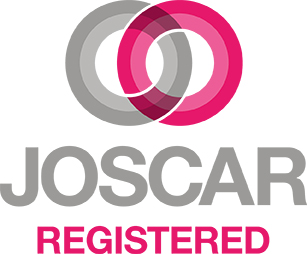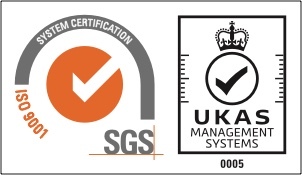
How do you know you are backing the right Leaders in your business?
When picking a winner, many factors come into play which impacts the performance of the horse – from whether they like to run when the ground is on the softer side, to whether it is used to carrying heavier weights. There are a lot of factors that will determine the performance of the horse, and its rider, on the day of the race.
So, when building the leadership of your business, how do you know that you are backing the right people?
In this blog, you will learn about:
- The Situational Leadership® model
- How it can be used to build Leaders within your organisation
- The benefits that adopting this leadership approach will bring to your staff and to your business
What is Situational Leadership and why should you adopt it?
The need for effective leadership is greater than ever. A recent Chartered Management Institute (CMI) report found that 43% of workers rate their Line Managers as being ineffective and often fail to recognise or support their talents.
Dr Paul Hersey’s task-specific, original Situational Leadership® Model is based on the relationship between leaders and followers and serves as a framework to analyse each situation based on the:
- amount of guidance and direction (task behaviour) a leader gives
- amount of socio-emotional support (relationship behaviour) a leader provides
- readiness level that followers exhibit in performing a specific task, function, or objective
Situational Leadership® is a proven model of effective leadership that has endured the test of time. It’s a practical approach which helps your people to be more effective in achieving their goals, and shows you, as a leader, how best to respond to their performance needs.
How to use the Situational Leadership® model to build your Leaders
With studies revealing that more than 30% of employees say that poor leadership at work is the most stressful part of their job and that their boss makes them feel controlled, manipulated or defensive, it’s no surprise that one of the most powerful factors in being a successful Leader is how you act.
Powerful leadership is not about walking ahead of the pack and calling others to follow; it’s about cheering them on from the side lines and allowing them to walk independently whilst also providing them with the appropriate amount of guidance and support.
“A leader is like a shepherd. He stays behind the flock, letting the most nimble go out ahead, whereupon the others follow, not realising that all along they are being directed from behind." Nelson Mandela
Situational Leadership®, which stresses flexibility and simplicity in execution, can equip Leaders in your organisation with the tools necessary to skilfully navigate the demands of an increasingly diverse workforce and evolving global marketplace.
The GBS Situational Leadership®: Building Leaders course provides Leaders with an action-oriented framework that increases both the quantity and quality of performance conversations by matching a staff member’s Performance Readiness® Level for a specific task with the appropriate leadership style. This task-specificity is at the heart of Situational Leadership®and is paramount to ensuring that your organisation is comprised of capable situational leaders who drive behaviour change.
The Situational Leadership® model is grounded in four, foundational competencies:
- DIAGNOSE – Leaders need to be able to identify a specific task and objectively assess the ability and willingness of the individual or team performing it
- ADAPT – Regardless of the leader’s personal level of comfort, they need to be able to pursue an approach that has a high probability of success
- COMMUNICATE – Leaders need to be able to effectively execute or deliver each leadership style (empowering, participation or directive)
- ADVANCE – Fundamentally, leaders add value by accelerating the development and reversing the regression of those they influence
Those themes are translated into actionable practices Leaders can employ to increase their effectiveness:
- MODEL THE WAY – Leaders need to identify their personal values, share and affirm those values and ensure their actions align (the inevitable “walk” is synchronised with the proverbial “talk”)
- INSPIRE A SHARED VISION – Leaders shape the future by routinely soliciting input and enhancing their perspective on “what is possible” as compared to “what is”
- CHALLENGE THE PROCESS – Leaders look for opportunities to improve by taking calculated risks, generating “small wins” and learning along the way
- ENABLE OTHERS TO ACT – Leaders demonstrate a propensity for action by meeting followers “where they are,” building trust and helping them develop competence
- ENCOURAGE THE HEART – Leaders recognise the contributions of others and celebrate victories (large and small) along the way
The benefits of adopting Situational Leadership® in your business
As a leader, you are not only responsible for the strategic direction of your business area, but also for the success of your staff. All too often we learn of cases of poor leadership, which in most cases leads to loss of staff, low levels of innovation, and overall unhappiness of staff members.
Regardless of your role, it is important to understand that how you treat and interact with your staff can have a significant impact on business success. If you’re unsure whether your leadership style will have a negative effect on your staff, be mindful of the following four areas when going about your day-to-day role:
1. Job satisfaction
The overall happiness of your staff within their roles is crucial for business success. As a Leader, you are able to significantly impact their job satisfaction. Ensure that employees feel valued in their role, that they are making meaningful contributions, and that the work culture is of a positive nature. A consistent work life balance is also important and will contribute greatly to their overall happiness
2. Staff retention
Closely linked with job satisfaction, it is important to note that your leadership style will also impact the retention of staff. If the work culture is one that is positive and constructive, employees are more likely to value their jobs higher. If they feel that they are consistently undervalued and overworked, they are likely to look for other employment. As a leader, you must understand that your actions will significantly impact the choices of staff, and it is therefore something that you should always consider when analysing your leadership style
3. Level of innovation
It is no secret that innovation must come from the top in order to be effective. Unless management encourages innovative practices, employees will generally feel uncomfortable in suggesting new ideas or processes. As a Leader who would like to see innovation take place, your leadership style must ensure that employees understand that it is okay to be wrong, and to suggest unique concepts. If innovation is crucial to the success of your business, you must ensure that your leadership style is encouraging of it at all times. If it is not, you will find that with time, innovation does not occur and employees will feel less comfortable in sharing their views
4. Overall business reputation
If your business is one which thrives on customer service or client relationships, you need to be mindful of how your leadership style will be perceived by customers and clients. In customer-focused businesses, employees will be the face of the organisation. If staff look as if they would rather be elsewhere, are not engaged, or are not happy, this will reflect badly on your business reputation. If you have staff interacting with customers on a regular basis, ensure that you iterate the importance of a positive external reputation. It is also important to give them a reason to be positive when interacting with the public, whether this be an employee rewards program, or simply positive reminders in the workplace.
Situational Leadership®: Building Leaders - London on 24th - 25th May 2018






